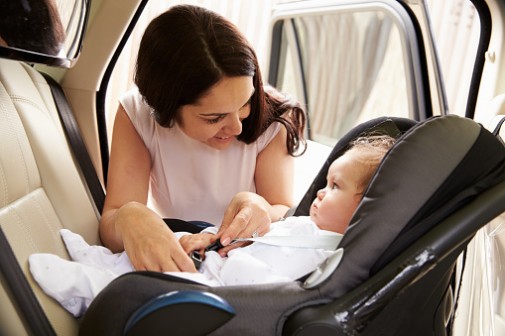5 dangerous car seat mistakes

National organizations and safety experts are alerting parents that simply buckling a child into their car seat is not enough to keep them safe during a car accident.
While data from the Centers for Disease Control and Prevention shows car seats can reduce the risk of death by up to 71 percent for infants and 54 percent for toddlers, parents unknowingly make safety errors that put their child at serious risk of injury and even death, says Alix McNulty, injury prevention coordinator at Advocate Children’s Hospital in Oak Lawn, Ill.
McNulty says parents are making errors that are avoidable or easy to correct. Here are a list of top car seat mistakes she sees, as well as ways to fix the errors:
Mistake No. 1: Not reading the manual
Few parents take the time to read the instruction manual that comes with their child’s car seat. The manual contains crucial installation instructions and height and weight requirements. Every car seat is different, so parents should not assume if they’ve used one, they’ve used all. Can’t find your manual? Check the manufacturer’s website.
Upon purchase, parents also should complete the seat’s registration card so they can be contacted quickly in the event of a recall.
Mistake No. 2: Not researching the expiration date
Just like dated milk or cheese, car seats expire and are not safe to use past the expiration date. They typically expire six years from the date of manufacture – not to be confused with the date of purchase. Expiration dates are in place because safety standards and features change over the years and the seat’s plastic casing wears down over time. The expiration date is often printed on the bottom of the seat.
Mistake No. 3: Harness straps are twisted or too loose
Harness straps need to lie completely flat and fit snug across the kid. Otherwise, children can be at risk of being ejected from their seat if the strap is twisted or loose.
Mistake No. 4: Turning the infant forward prematurely
According to the American Academy of Pediatrics, children cannot be turned forward until they are at least 2 years old, but it is ideal that they stay rear-facing as long as possible or until they reach the weight and height maximum of their seat. Although it may not seem comfortable, rear-facing children should cross their legs for safety. If a child is turned forward, there is the risk of more serious injuries to their internal organs.
Mistake No. 5: Not knowing the history of the car seat
Parents should never purchase or accept a used car seat if they do not know its history. Even a minor car accident can damage internal parts in the car seat, making it ineffective. Car seats should never be bought at a garage sale or thrift store.
Parents who are still unsure if their child’s car seat is correctly installed should make an appointment with a certified car seat technician.
Related Posts
Comments
About the Author
Julie Nakis, health enews contributor, is manager of public affairs at Advocate Children's Hospital. She earned her BA in communications from the University of Iowa – Go Hawkeyes! In her free time, she enjoys spending time with friends and family, exploring the city and cheering on the Chicago Cubs and Blackhawks.

















